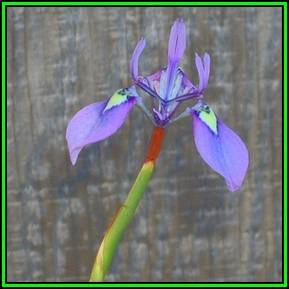
Moraea tripetala 10 Seed Pack- Indigenous Endemic Perennial Bulb -Insured Flat Ship Rate- New
Check my rate
| Main centres: | 1-3 business days |
| Regional areas: | 3-4 business days |
| Remote areas: | 3-5 business days |

| Main centres: | 1-3 business days |
| Regional areas: | 3-4 business days |
| Remote areas: | 3-5 business days |
The genus Moraea belongs to the Iridaceae family and is a close relative of the genus Iris. It is accepted that it evolved independently from Iris itself, which is restricted to the Northern Hemisphere. Therefore, it is strictly an African genus extending from Nigeria and southern Ethiopia, into the African highlands down to the southern tip of Africa where winter rainfall is predominant. Many are indigenous to South Africa. It is in the winter rainfall area where one finds the highest concentration of Moraea species. They have long narrow basal leaves, sometimes only one per corm and large yellow, pink, orange, or bicolor flowers with six fairly equal tepals.
Moraea tripetala is a South African endemic species from the Western Cape Province where it can be found growing on sandy soils on coastal plains or lower mountain slopes, as well as coastal limestone from Piketberg to the Cape Peninsula, and eastwards along the coastal lowlands to Knysna. It was previously known as Iris mutila, Iris tripetala, Vieusseuxia mutila, Vieusseuxia tripetala, Vieusseuxia tripetala and Vieusseuxia tripetaloides. Vernacular names include Bloutulp, Dwergtulp, Kleinuiltjie, Kleinuintjie, Perde-uintjie, Tulp and Uiltjie. It grows from 10cm to 50cm tall and from spring to summer it bears pale to dark blue to purple flowers with white or yellow nectar guides.
|